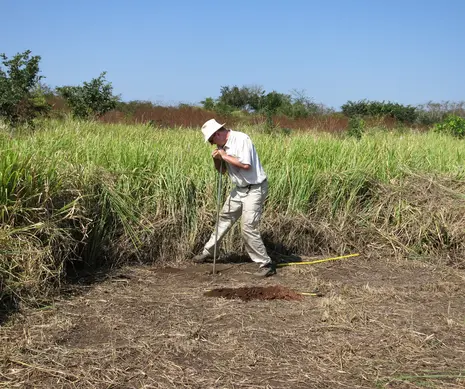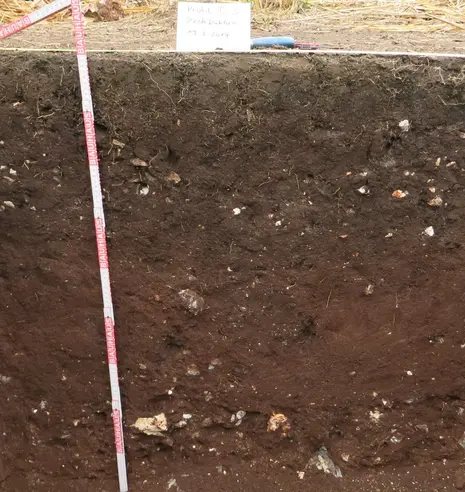Maya Garden Cities
Settlement development and soils in Dzhekabtún, Campeche (Mexico)
The Classic Maya culture (approx. 250-950 AD) in the area of ??present-day Mexico, Guatemala, Belize, and Honduras is known for their cultural achievements in astronomy, mathematics, architecture and handicrafts. For a long time, however, Maya settlements were inadequately known, as archaeological investigations in the difficult environment of the dense tropical forest were mostly confined to monumental stone buildings in the centers that served as rulers' seats. Only when the outer areas of the settlements were explored in the course of large survey projects, did questions on settlement patterns and economics become more important.
The structure of the Maya settlements is dominated by so-called court groups, in which residential and farm buildings are grouped around a courtyard on a common platform. Based on geochemical investigations since the 1980s, it can be assumed that horticulture was practiced between the farm groups, possibly as a supplement to the agriculture practiced outside the settlements. However, clear evidence is missing so far. Considering the potential importance of soil use within settlements, it is astonishing how few studies on soils, their quality and usability, and the spatial distribution of these parameters exist so far.
Soil quality is likely to have played a role not only in the crisis of the final phase of the classical Maya culture, but also in the early phase, when first good soils, later less fertile soils were opened up for economic use. Controlling access to good land would have promoted the emergence of an economic and political elite. Thus, the soil quality would be not only of economic and ecological, but also of social and political importance for the development of Maya civilization.
To test this hypothesis, the spatial distribution of soil types and quality will be investigated in relation to the settlement development of the early to postclassic Maya settlement of Dzehkabtún in Campeche, Mexico. This site has been archaeologically investigated since 2011 by the Ibero-American Institute Berlin, with which we have a cooperation agreement. As part of two internally funded field campaigns conducted by the IVGA in 2014 and 2018, numerous pedological investigations were carried out in the center of the site in order to gain information on relations to the settlement structure.
In addition to soil coring (Fig. 1), soil profiles (Figs. 2, 3) allowed for an identification of various soil types (Fig. 4) and collection of soil material for laboratory analyzes. Local soil development varies strongly between the court groups: on the one hand, there are soils with colluvial layers containing ceramic/charcoal fragments and coarse soil components (Fig. 2), on the other hand there are deeply weathered red soils (Luvisols, Fig. 3) without any obvious anthropogenic impact. For the assessment of soil quality, currently ongoing laboratory analyzes of soil chemical parameters such as lime content, pH, cation exchange capacity and dissolved organic matter are carried out. From the parameters obtained, conclusions can be drawn on the anthropogenic use of the soil and the associated changes in vegetation, the onset of soil erosion and the shifting processes of soil material.
In a third-party project to be applied for, the soils of the settlement and the surrounding area (off-site) are to be analyzed systematically. Their distribution will be compared to the development of the settlement in order to derive a land use model. This also requires a comprehensive dating program of soils, sediments and archaeological findings. In this way, the role of soils for the settlement development of Dzehkabtún will be clarified, which will make an important contribution to the understanding of the urban character of Maya settlements.
Financial support:
- Preparatory project: internal research funding (FNK)
- Planned follow-up project: DFG



